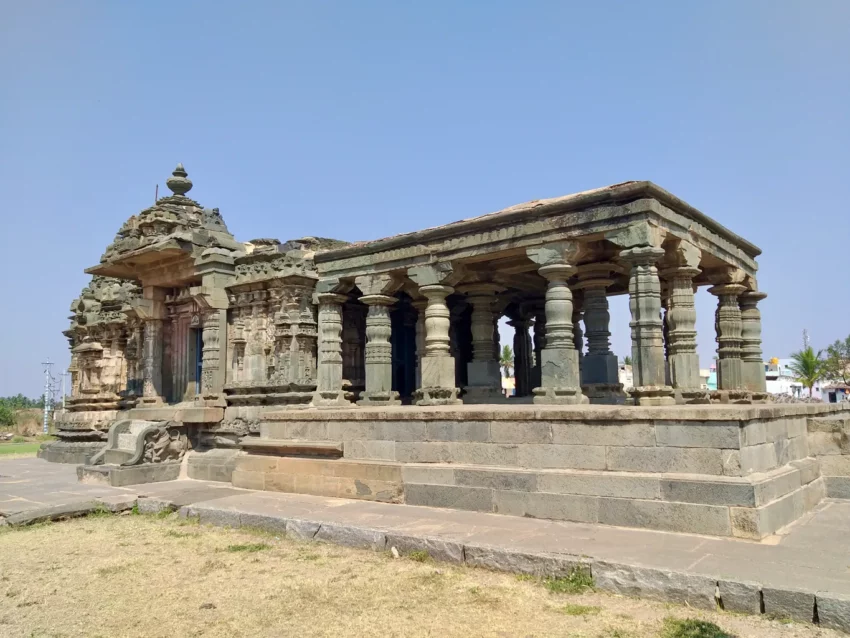Get your dose of History via Email
Introduction to Nannesvara Temple
The Nannesvara Temple, situated in the Lakkundi village of Karnataka, India, is a remarkable testimony to the architectural prowess of the Chalukya dynasty that flourished from the 10th to the 12th centuries AD. This edifice, dedicated to the Hindu deity Shiva, is a paragon of the temple architecture developed under the Chalukyas, showcasing intricate carvings, a well-considered design, and an adherence to religious and cultural principles of the time.
Architectural Significance of Nannesvara Temple
Constructed during the rule of the Kalyani Chalukyas, the Nannesvara Temple stands out for its ornate and sophisticated architectural elements. The craftsmanship, a fusion of the Nagara and Dravidian styles, is evident in the graceful lines, the adeptly proportioned structures, and the decorative motifs that embellish the temple. This amalgamation of styles reflects the Chalukyas’ political and cultural interactions with neighboring regions and their prowess in creating a distinct architectural identity characterizing the Deccan region.
The Ekakuta Design of the Shrine
The Nannesvara Temple exemplifies the Ekakuta layout, where a singular sanctum or garbhagriha forms the core of the temple. The vimana, the tower above this sanctum, is intricately carved, adding to the temple’s grandeur and devotional focus. The Ekakuta design is significant as it symbolizes an intimate space for the deity, suited to personal devotion rather than large congregational worship. This design choice is characteristic of many smaller temples from the era which aimed to foster a more direct spiritual experience.
Decorative Features and Religious Iconography
Adorning the Nannesvara Temple are a series of ornate carvings and reliefs detailing various depictions from the Hindu pantheon, including manifestations of Shiva. The temple walls serve as a canvas for these etchings, rich with mythology and religious symbolism. Artisans of the period, known for their stone-carving proficiency, evidently channeled a deep understanding of Hindu myths and religious themes in their work, thereby enriching the cultural and spiritual narrative of the temple.
Preservation and Rehabilitation Efforts
The Nannesvara Temple, like many historical structures of great significance, has faced the rigors of time and the effects of environmental conditions. It stands as an essential heritage site, requiring ongoing conservation measures to preserve its structural integrity and artistic charm. The Archaeological Survey of India recognizes the historical value of the temple and, as such, has undertaken efforts to maintain and restore the site for the benefit of future generations. Through such interventions, the legacy of a bygone era remains intact within the enduring stones of the Nannesvara Temple.
Conclusion: Reliving the Chalukyan Glory
The Nannesvara Temple in Lakkundi is a beacon of Chalukya architectural genius and artistic expression. Beyond the technical aspects of its construction, the temple stands as a repository of the culture, devotion, and creative spirit that permeated the Chalukyan reign. It serves as a vital piece in the puzzle of India’s historical landscape, offering scholars, historians, and visitors alike the chance to relive the glory of an empire that left an indelible mark on the subcontinent’s architectural heritage.

